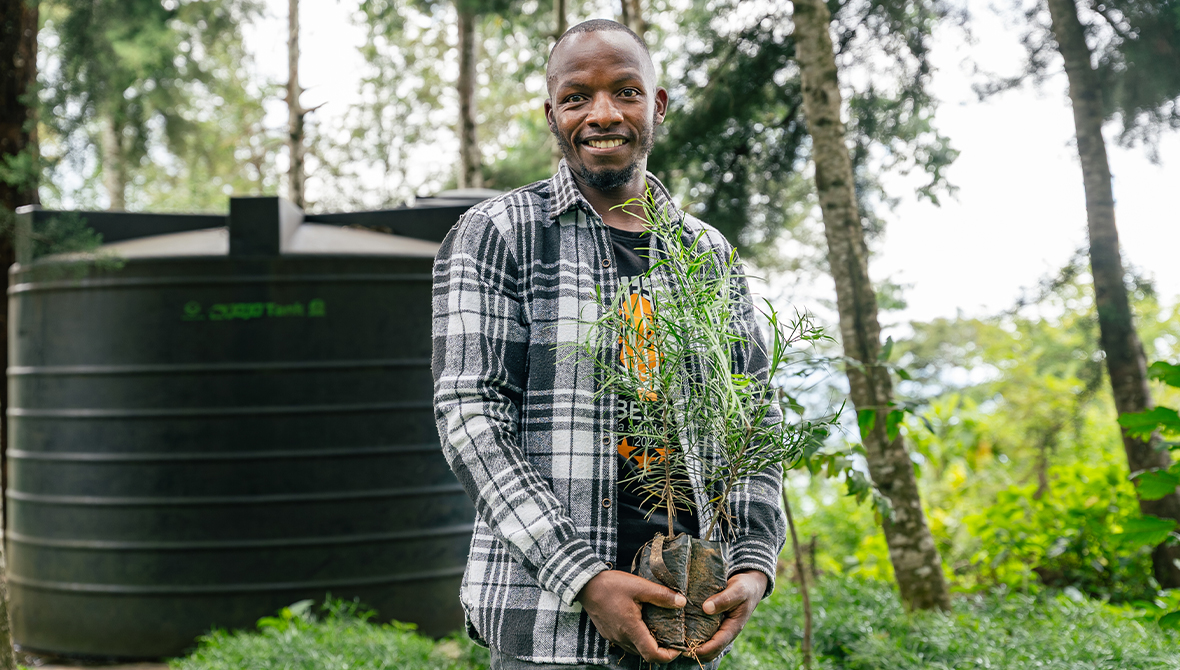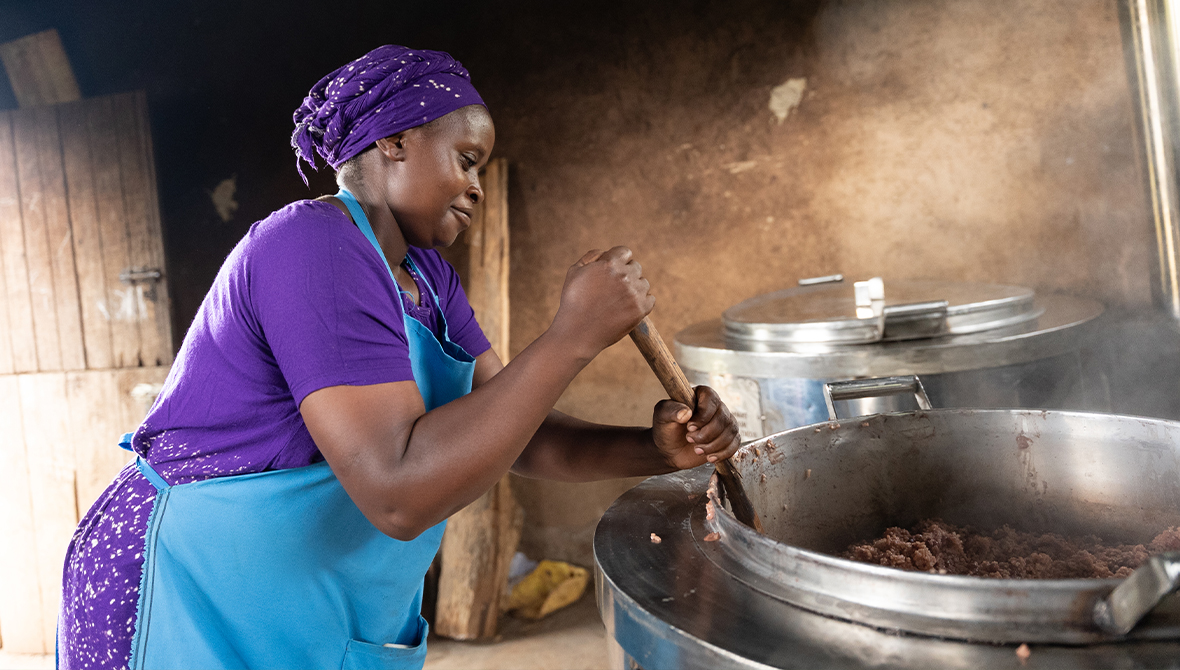Seeds of Change: A Young Man’s Mission to Save His Childhood Forest

Eliud Mwasingo Kimori holding one of his seedlings in his community's thriving tree nursery. ©AWF
Eliud Mwasingo Kimori’s memories of his early education are smoky—literally. Looking back, Mwazola Primary School was often characterized by smoke-filled kitchens. As a boy, the smoke-filled kitchens signified that something was indeed cooking.
As he grew older, though, the significance of the billowing smoke became clearer, and he understood that for every meal cooked in the tiny kitchen in his primary school, a lot more damage was being done elsewhere.
“My parents and other parents used to bring firewood for this school three times a term when I was a student,” Eliud says. “They would spend hours collecting logs, carrying them to school in heavy bundles as part of their contribution to school operation costs. This meant they were cutting down the very trees from the forest that made our home special.”
Now, as a leader in his community, Eliud is ensuring that no student at his former school goes through what he and many others went through for decades—carrying firewood to school or having parents bring firewood to the institution three times a term as part of their contribution to the school feeding program.
Through his advocacy, the African Wildlife Foundation (AWF) supported the installation of energy-efficient stoves, which drastically reduced firewood use. What once required truckloads of wood from the surrounding Chawia Forest now requires just a fraction of that amount, just one contribution per term.

One of the energy-saving jikos, or stoves, at Mwazola Primary School in use. ©AWF
For Eliud, now serving his second three-year term as Chairperson of the Board of Management for Mwazola Primary School, the transformation from using large quantities of firewood to adopting energy-saving jikos is deeply satisfying, partly because he is a child of the forest.

Eliud Mwasingo Kimori gives instructions at Mwazola Primary School as the Chairperson of the Board of Management. ©AWF
The 28-year-old Eliud hails from Chawia Hills, a region of immense ecological significance. The Chawia Forest is part of the Taita Hills in Kenya, one of the Eastern Arc Mountain Forests, recognized globally as a biodiversity hotspot. Despite measuring just 90 hectares, Chawia is home to rare and endemic species found nowhere else. It is a critical water catchment for lower-lying wildlife conservancies such as Lumo Conservancy and, by extension, the Tsavo National Park.
Like many other forests in the region, it has suffered from deforestation, largely driven by the demand for firewood. Eliud continues to make an impact beyond the walls of his primary school in this destruction.
Now, he just doesn’t want to protect the forest—he wants to restore it.
Reviving the Chawia Forest Association
The Chawia Forest Association (CFA) was initially formed to engage the community in conserving their forest. However, over time, the CFA became inactive due to a lack of funding and coordination. Seeing its potential, Eliud took on a leadership role as deputy secretary, working to revive the association.
“My group (Mwaroko Youth Group) was formed after COVID-19. When the pandemic struck, many of us working or studying in urban centers had to return home,” Eliud recalls. In the years they spent away from home, change had begun to sweep across Chawia.
“We saw the environment around us was deteriorating. The forest—the very land that supports the lowlands—was being lost because the youth hadn’t been actively engaged in conservation. We were at risk of losing everything our grandfathers had left us,” he says.
Amid the despair, however, hope sprang eternal.
“That’s when like-minded youth came together and decided to act,” he adds.

This thriving tree nursery was planted by the Chawia Forest Association under Eliud's leadership. ©AWF
With AWF’s support, CFA was given a new life. The organization provided capacity-building training, helping the community develop strategies for sustainable forest management. Through this revival:
- Tree nurseries were established to aid in reforestation efforts.
- Alternative livelihoods such as beekeeping and eco-tourism were introduced to reduce dependency on firewood.
- The community gained a voice in decision-making, advocating for stronger protections against illegal logging.
- Through drip kits provided by AWF, irrigation practices improved and reduced upstream water abstraction by farmers along the forest’s rivers.
Eliud and the CFA have since planted over 3,000 indigenous trees, ensuring that the Chawia Forest has a future.
“Restoring this forest isn’t just about the trees,” he said. “It’s about securing water, preserving wildlife, and ensuring future generations inherit a thriving ecosystem.”
Building a Future Where People and Nature Thrive
Eliud’s work stands at the intersection of education, conservation, and community empowerment. By reviving the CFA and improving Mwazola Primary School’s cooking systems, he is not just saving trees—he is transforming lives.
As he put it, “I don’t want my son or any other student to go through what I did—spending school days fetching firewood instead of learning. Conservation is about making life better for both people and nature.”
Through his relentless passion and leadership, Eliud is proving that youth have the power to lead the way in conservation. And thanks to his efforts, Chawia Forest—and the communities that depend on it—stand a stronger chance of thriving for generations to come.
Explore four landscapes where communities are driving reforestation